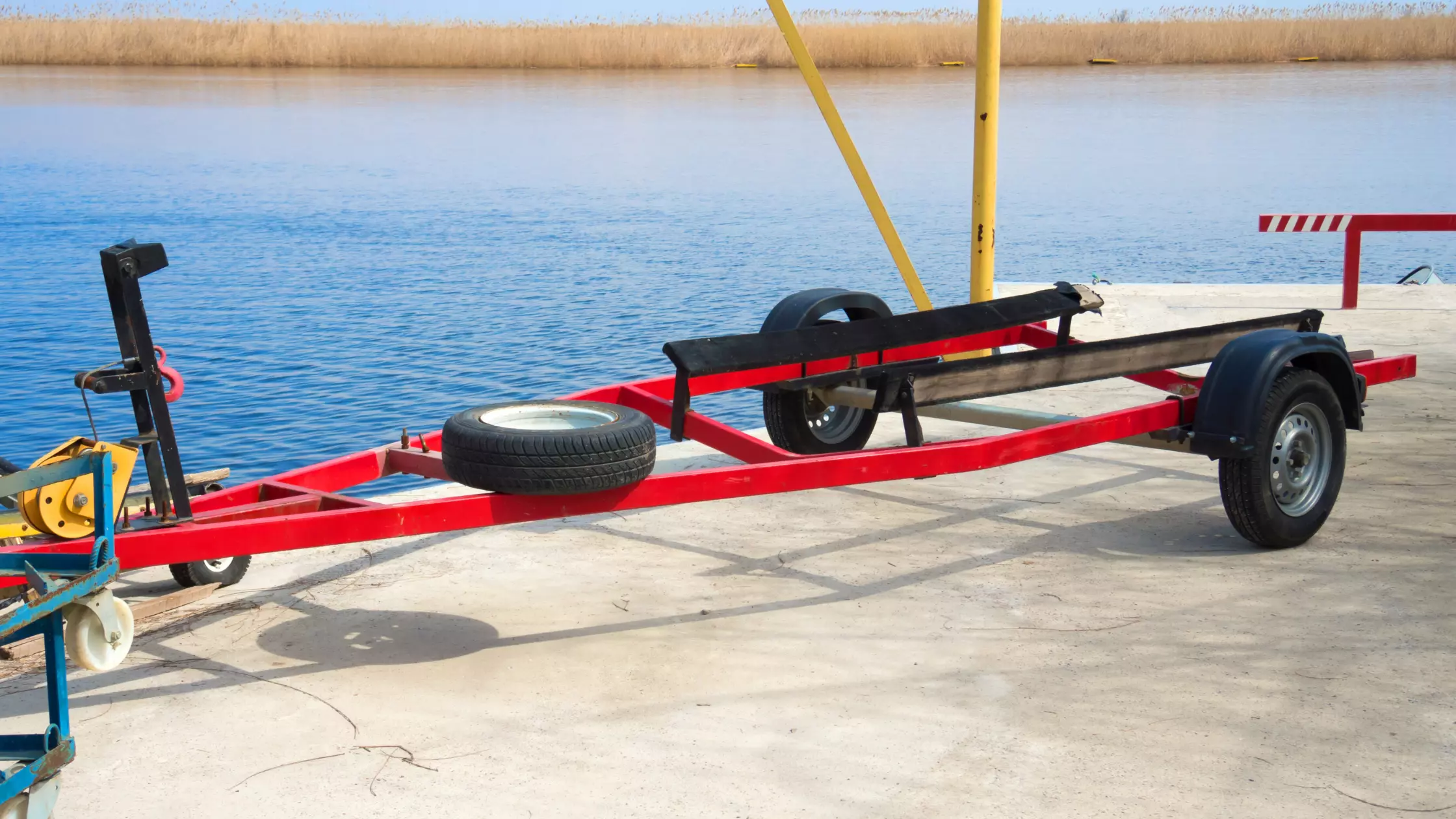Nothing says summer like a day out in your pontoon boat.
With the proper care and maintenance, you can keep your boat looking and running like new for years to come.
One of the best ways to maintain your pontoon boat’s appearance is to give it a fresh paint job.
Painting your pontoon boat can be daunting, but with the proper preparation, products, and patience, you can have your pontoon boat looking like a professional did the job.
This step-by-step guide will walk you through the entire process, from cleaning and prepping your pontoon boat to applying the new paint and sealing it for maximum protection.
With the proper knowledge, you can have your pontoon boat looking new in no time!
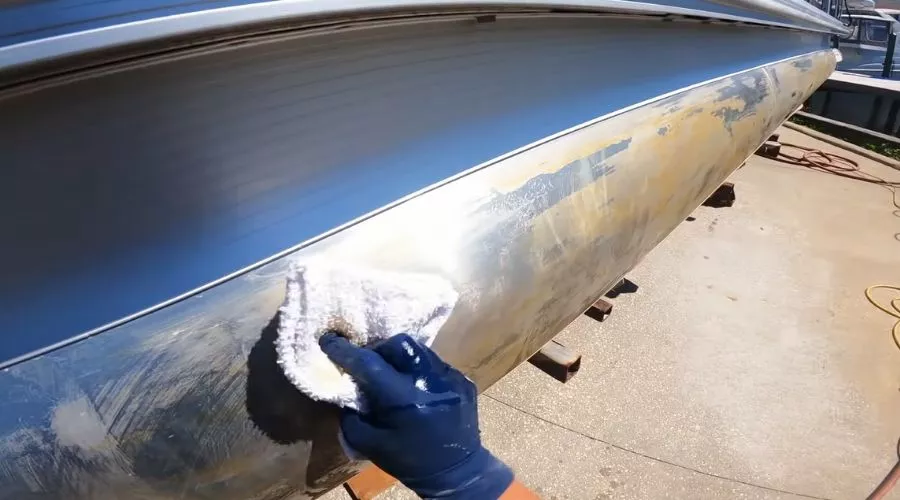
Before you even think about picking up a paintbrush, you should ensure that your pontoon boat is ready for painting.
This involves a few key preparation steps to ensure you get the best results and protect your boat’s surface.
First, you’ll want to remove anything on theon your boat’s surface hardware, such as eyelets, hinges, and hardware, as well as any decals or stickers on the boat.
Make sure you have a clean, dry surface before you get started. This will help seal the surface and prevent paint from seeping into any nooks and crannies. Finally, make sure that your pontoon boat is clean.
If there’s dirt or grime on the boat, it will seep into the fresh paint, causing it to peel prematurely.
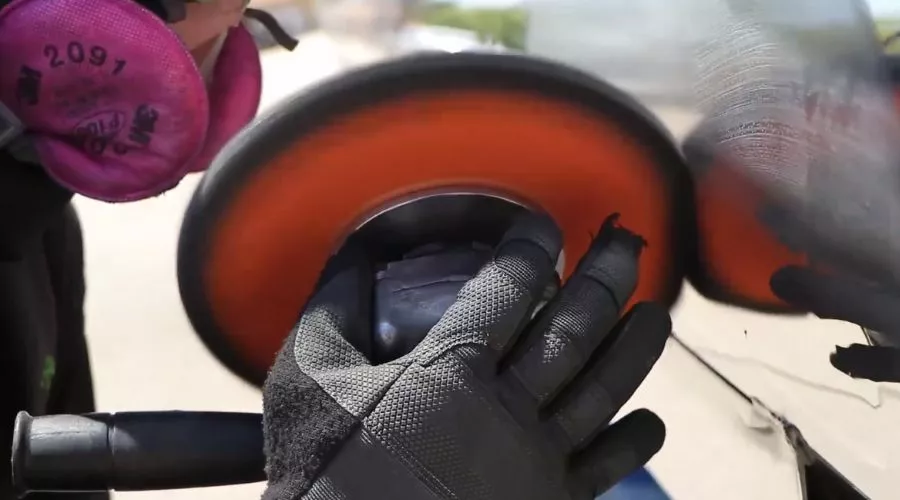
Before you start with the pontoon boat, you’ll want to make sure youensurerything you need to complete the job.
The first thing you should do is decide on the type of paint you want to use. A few different types of paint are ideal for painting boats.
The best paint for pontoon boat painting will be durable, easy to apply, and long-lasting. Ideally, it will also be easy to clean and not leave a heavy coating on your boat.
You can use different types of paint, but be aware that some colors may be better for pontoon boats.
Oil-based paints, while durable, are complicated to clean and will leave a heavy film on your boat, inhibiting the natural movement of your ship.
If you need help deciding what paint to use, most home improvement stores will have a paint specialist to help you find the right product for your needs.
The paint specialist can help you choose the correct type of paint based on factors such as the surface you’re painting, the color of your boat, and the desired level of protection.
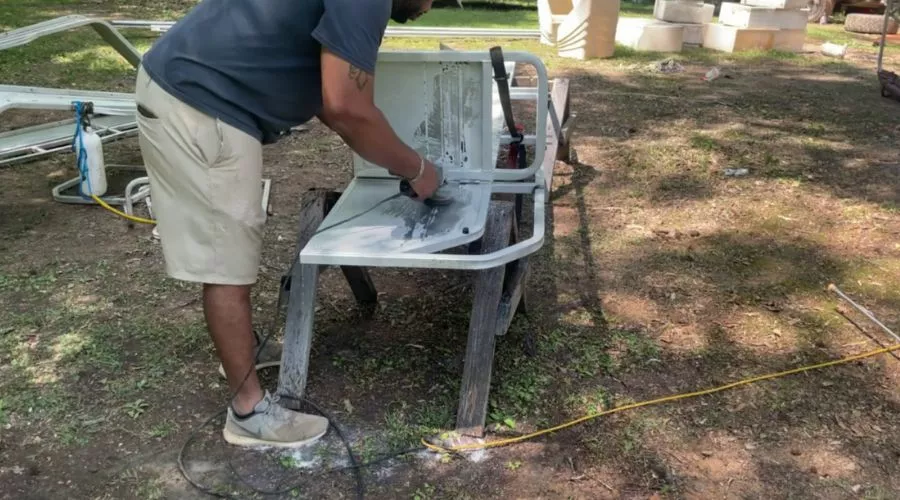
If your sweet boat is old, it might have been painted before, so you’ll need to remove the old paint before putting on the new paint. The type of paint will depend on what type you’re using.
If you’re using oil-based paint, you can use a scraper to remove the old paint. For latex-based color, you can use a paint stripper.
If you don’t want to use a messy solvent-based stripper, you can use a heat gun to remove the old paint. Be careful to avoid overheating the surface, or you could damage it.
Once you remove the paint, you’ll want to clean the surface before starting the new project.
You can use mild soap and water or a commercial cleaner like Goof Off to remove old paint or grime from the surface. Once your surface is clean, you’re ready to prime and paint.
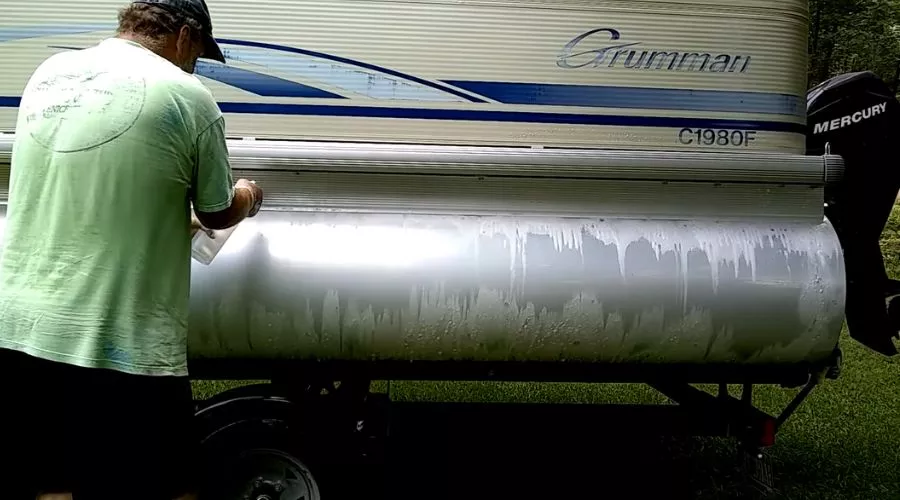
Before you paint your pontoon boat, you’ll want to ensure the surface is clean and prepped. First, you’ll want to vacuum the surface to remove any loose dirt or debris.
Next, you want to wipe down the surface with water and bleach to kill any bacteria or other microbes on the surface.
This will help prevent stains or mildew from forming on your pontoon boat. Once you’ve cleaned the surface, you can apply a sealer to protect the wood from stains and weather.
For a wooden boat, you can use a penetrating sealer, like the kind used to protect outdoor furniture.
For a fiberglass boat, you can use a gel coat sealer, which is designed for use on fiberglass.
Sealers will help protect your pontoon boat from stains and weather, helping to extend the life of your brand-new paint job.

Once you’ve cleaned and prepped the surface, you can apply the primer and paint. Be sure to use high-quality paint for the best results.
To make the surface smooth, you can use a primer before you paint. You can use a roller to coat the surface. For a smooth finish, you can also use a paintbrush.
When you are ready to paint, make sure that you apply the paint in the right direction. For latex paint, your brush should move toward the grain. For oil-based paints, your brush should push against the grain.
After you apply, you can use a paintbrush to create a smooth finish. Be careful not to overwork the paint, as this can cause bubbles, which will ruin the finish.
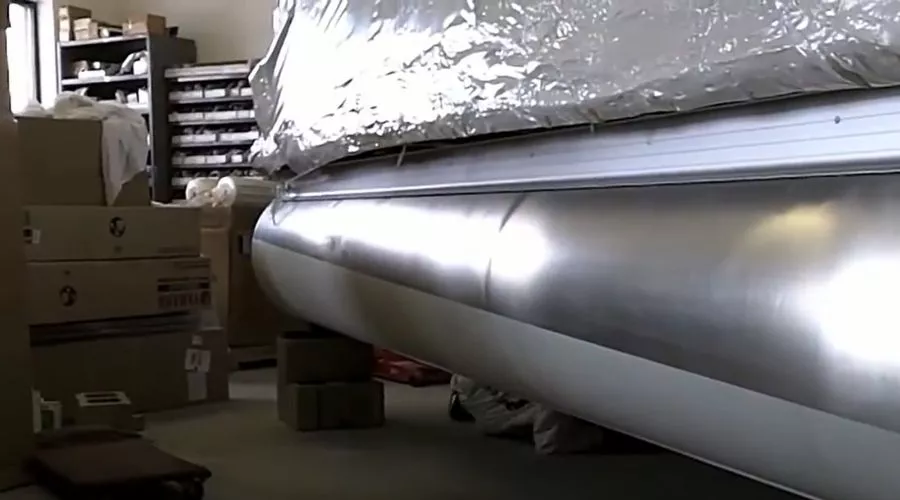
After you’ve applied two coats of paint, you can finish the job with a protective sealer. This optional step will protect your boat and make it last even longer.
A sealer will protect your boat from stains, saltwater, and other elements, helping to keep it looking new for years to come.
There are many different types of sealer, and you can use either oil-based or latex paint products.
After you’ve applied the sealer, you can let it dry and then use a clear coat to protect it and give your pontoon boat a glossy finish.
Be sure to let the sealer dry for the recommended time before applying the clear coat.
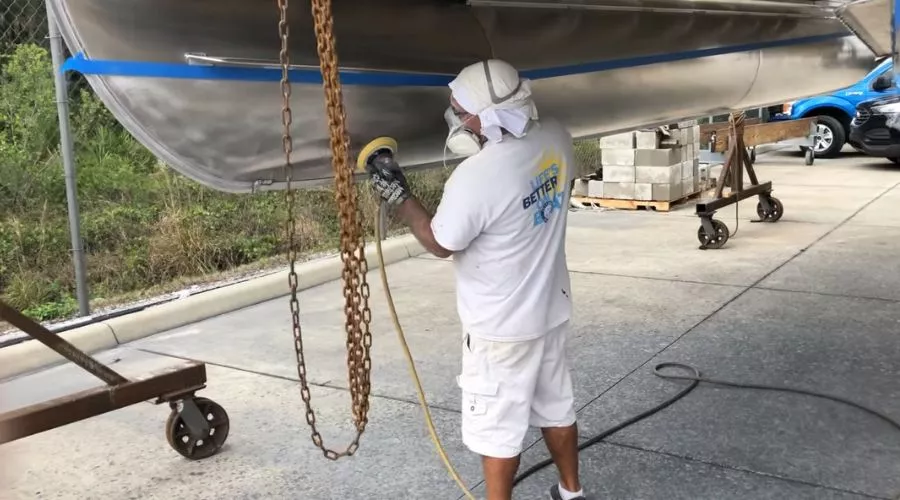
Once you’ve finished painting your boat, you’ll want to ensure that you maintain the paint job for maximum life.
While your paint job may last for years, you can help it last even longer by following a few maintenance tips.
First, be careful not to drag your boat on the ground or scrape it against rocks or docks.
This can cause scratches and dings, leading to rust on your boat and damaging your paint job and the pontoon boat’s structure.
Avoid leaving your boat in the sun. Sunlight can cause paint to fade, and ultraviolet rays can damage the stain and leave it vulnerable to chipping and peeling.
Finally, you can use mild soap and water to clean your pontoon boat. You can also use a commercial cleaner like Goof Off if there’s a stubborn stain or buildup.
Troubleshooting Common Painting Problems
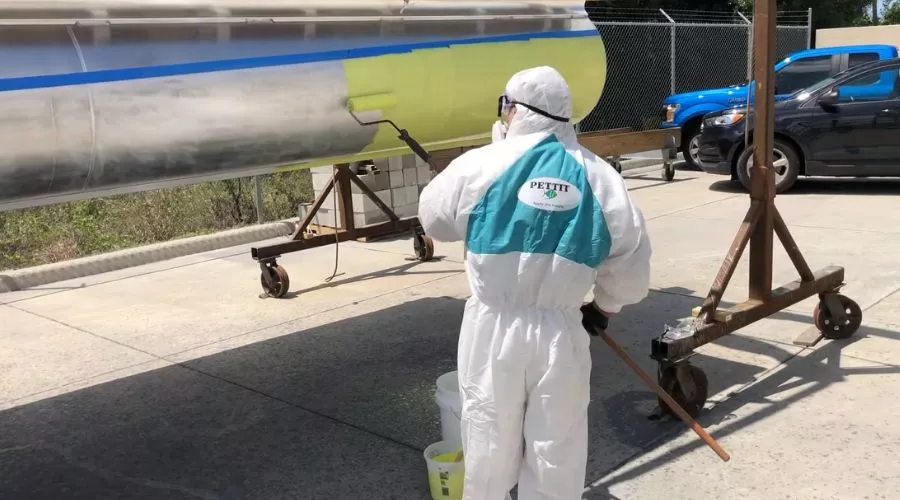
If you get in a bind while painting your boat, you may face some problems. I’ve outlined a few common issues during pontoon boat painting projects and how you can correct them.
If you notice the paint bubbling up after you’ve applied the first coat, you may have waited too long between coats.
You can avoid this by applying the first coat immediately after the primer.
If you notice bubbles in the paint after you apply the first coat, the paint may be too thick. You can fix this by adding thinner to the color before applying the second coat.
It may be too thick if you notice brush marks in the paint. You can fix this by thinning the paint before applying the second coat.
What kind of paint do you use on a pontoon boat?
When picking out paint for your pontoon boat, you’ll want to look for one specifically formulated for marine use.
This means it should be able to stand up to water, wind, salt water, and other elements it might come in contact with while out in the open water.
You’ll also want to ensure that it’s designed to adhere to aluminum so it won’t peel or chip off easily.
When applying the paint, prepare the surface by sanding down any rough spots and removing any dirt or debris that could interfere with the adhesion.
Once the surface is prepped, you can apply the paint using either a brush or a roller.
Always work in thin layers and let each layer dry completely before applying the next.
This will help ensure that the paint adheres properly and provides the best protection for your pontoon boat.
FAQS
How much does it cost to paint a pontoon boat?
Additionally, applying multiple coats of paint will help ensure a longer-lasting finish. Overall, painting your pontoon boat can be expensive, but it can also add value to your boat and make it look brand new again. Be sure to hire an experienced professional if you want to avoid taking on this project yourself.






